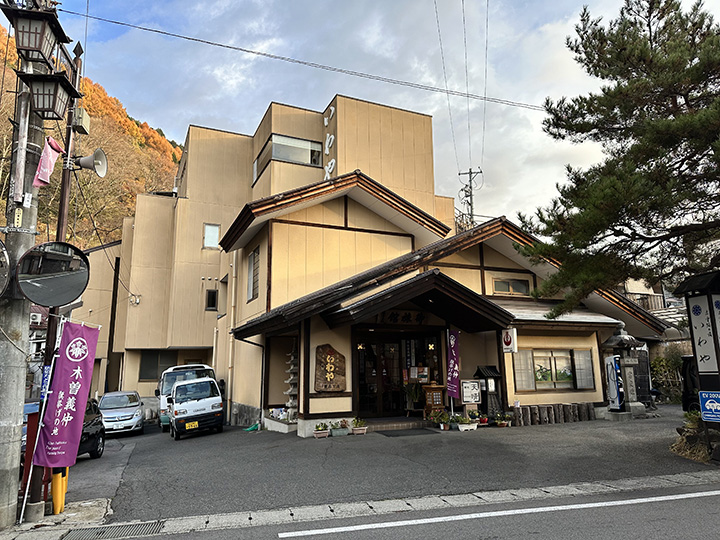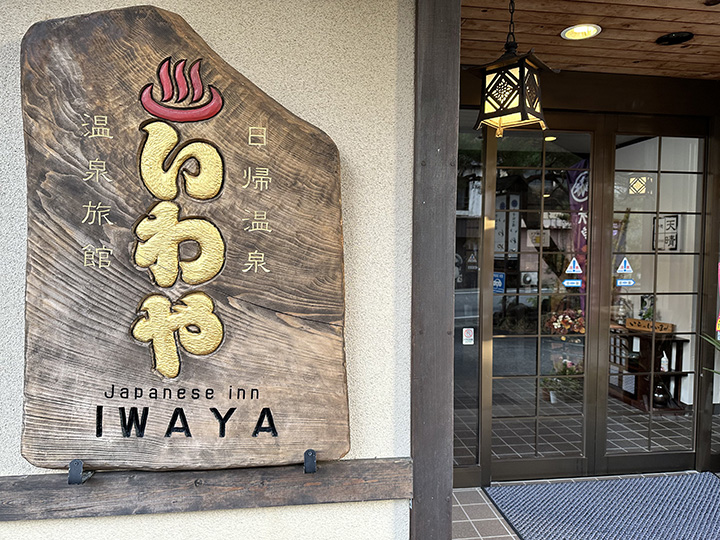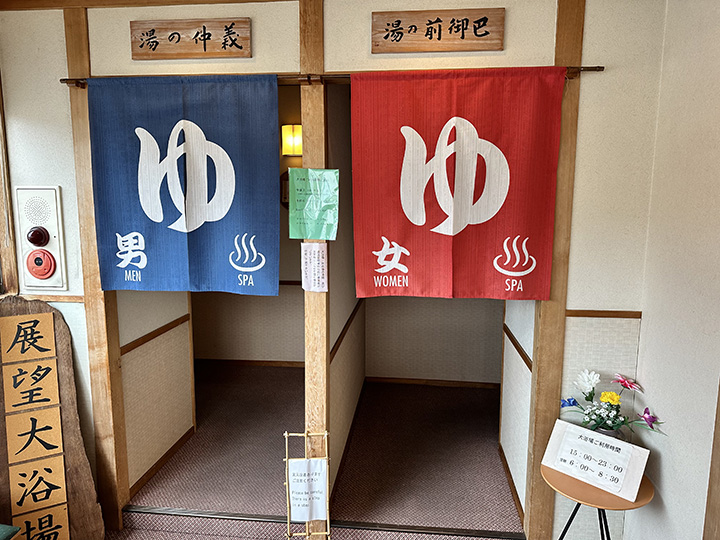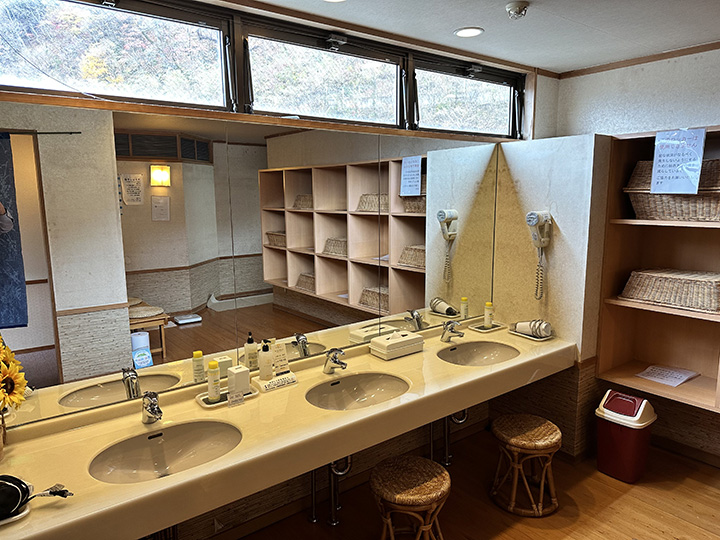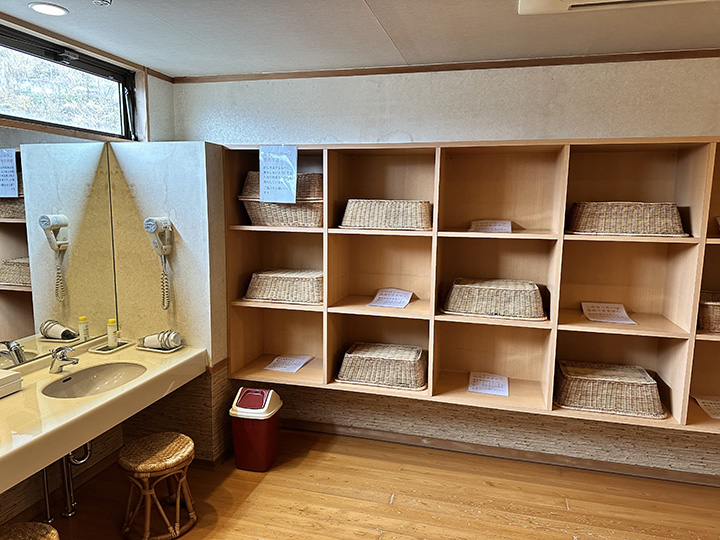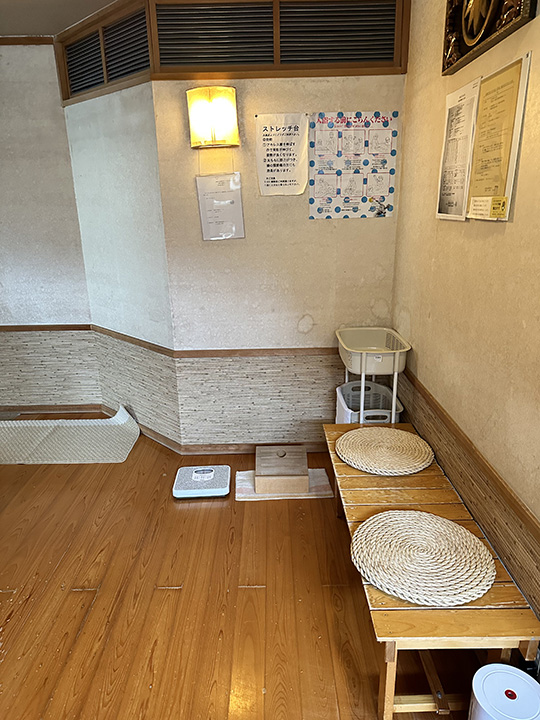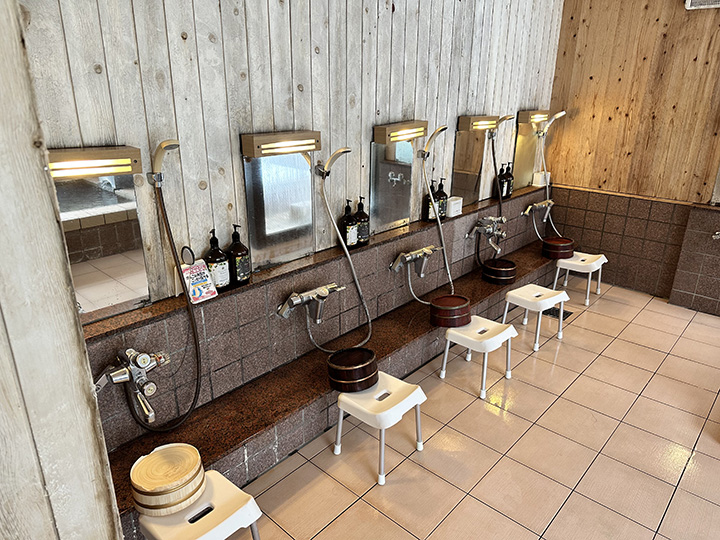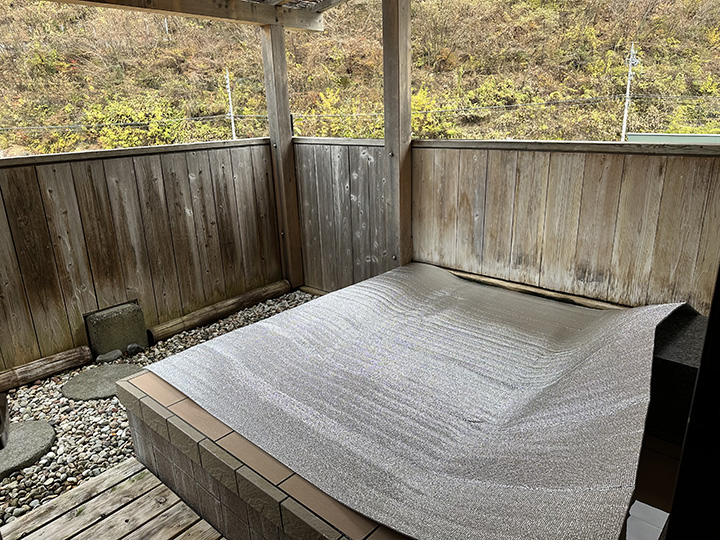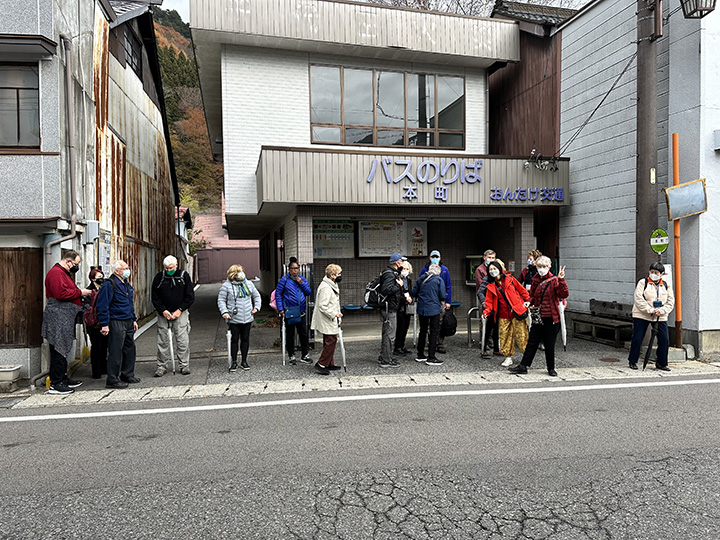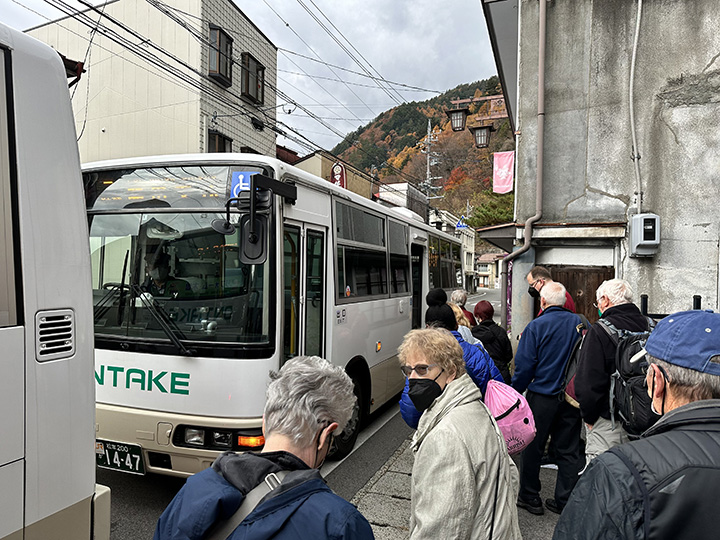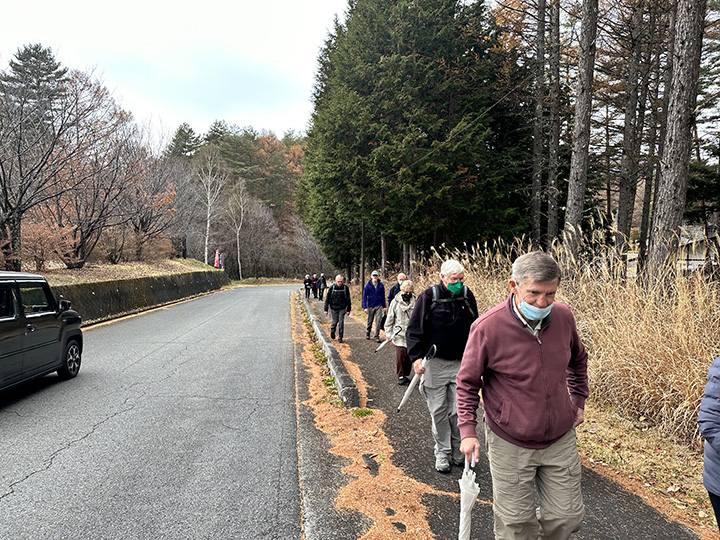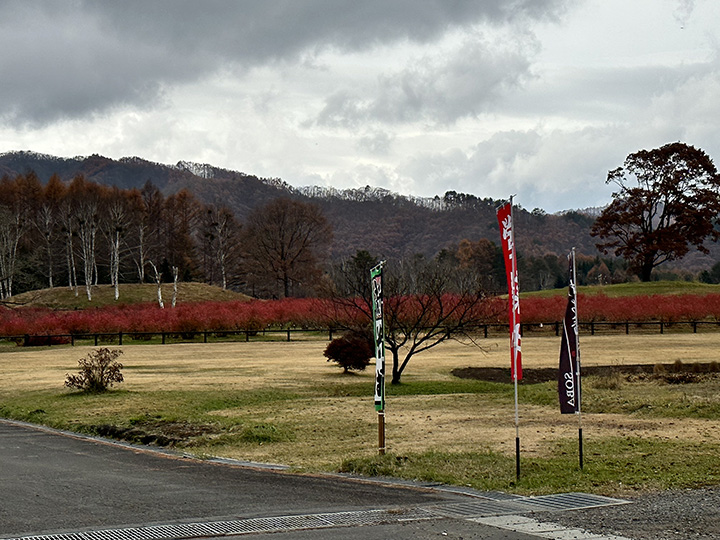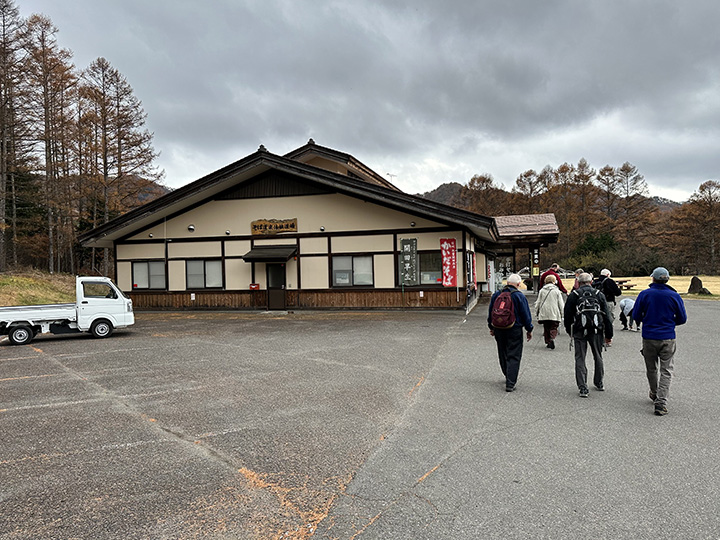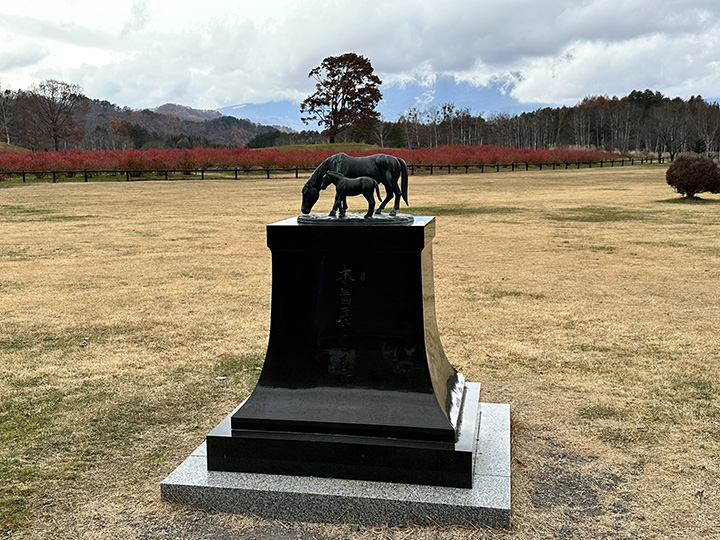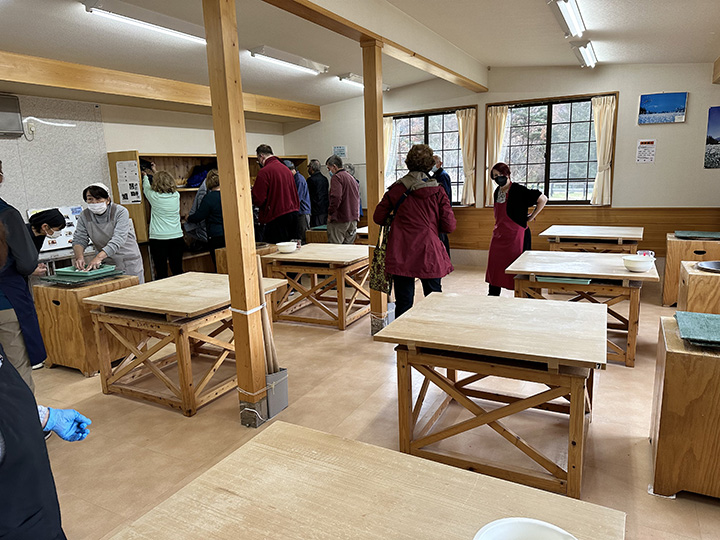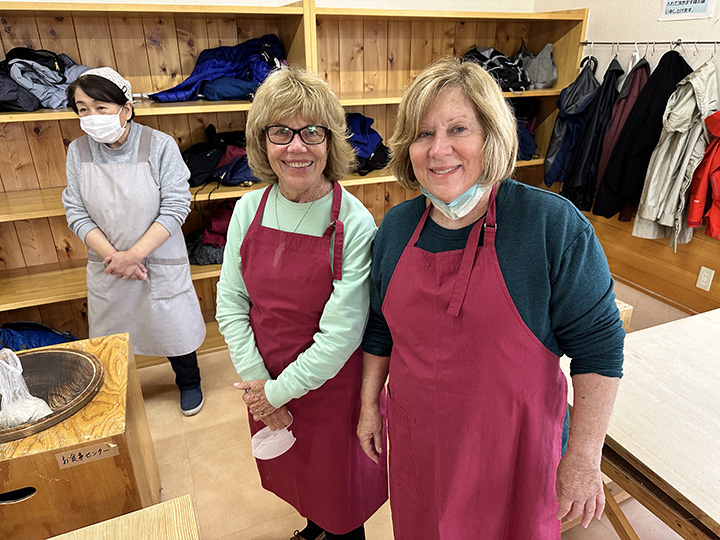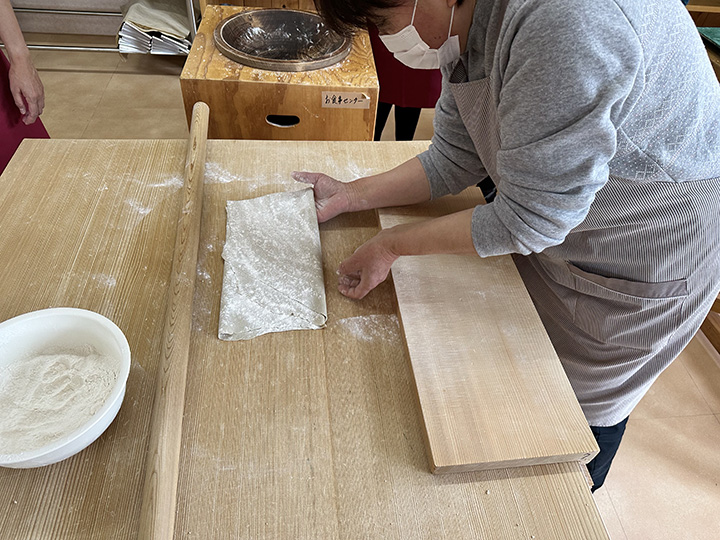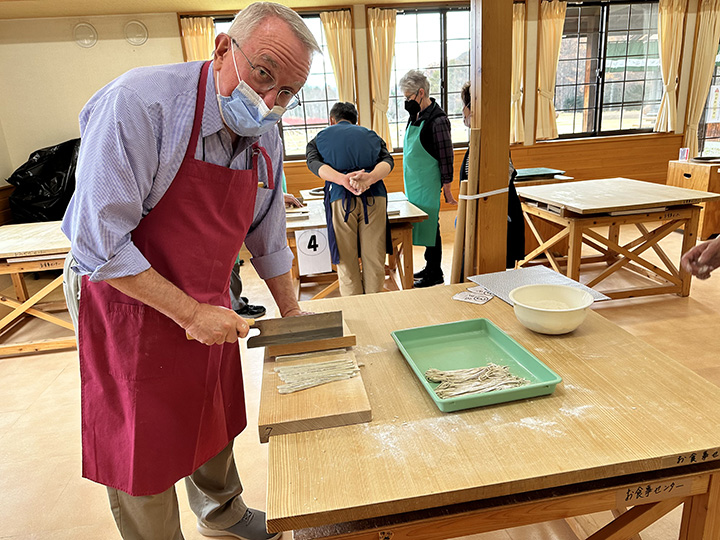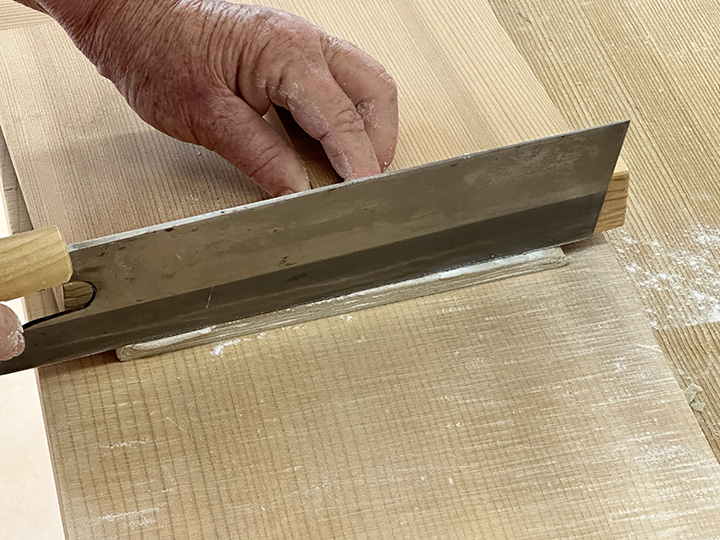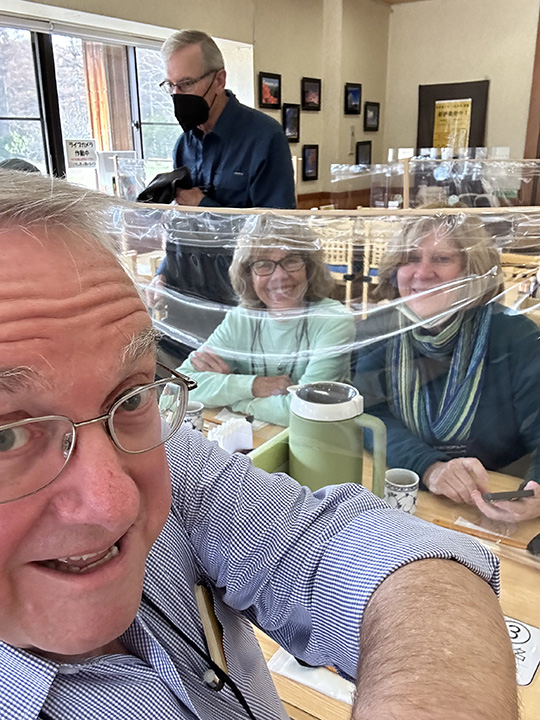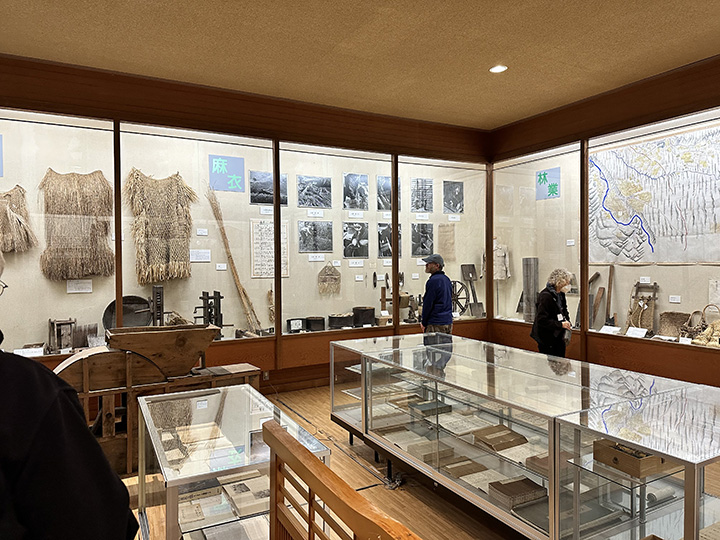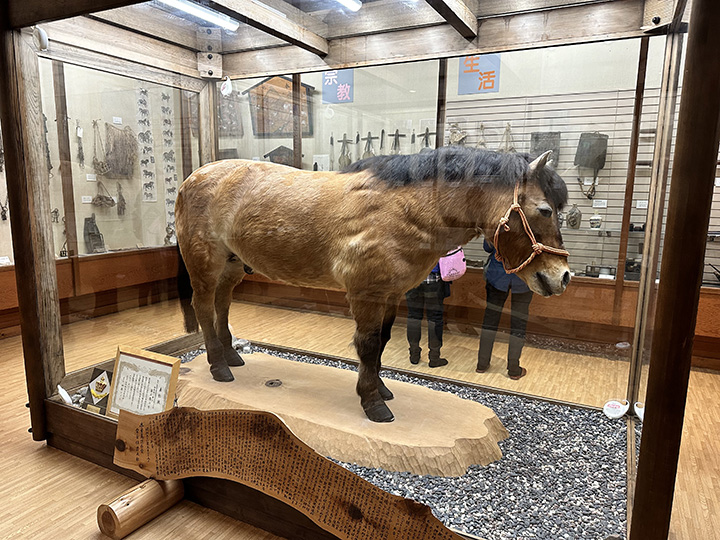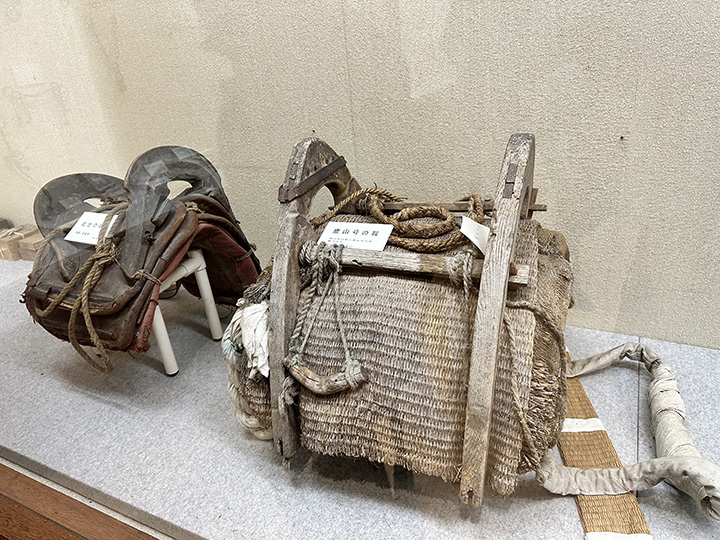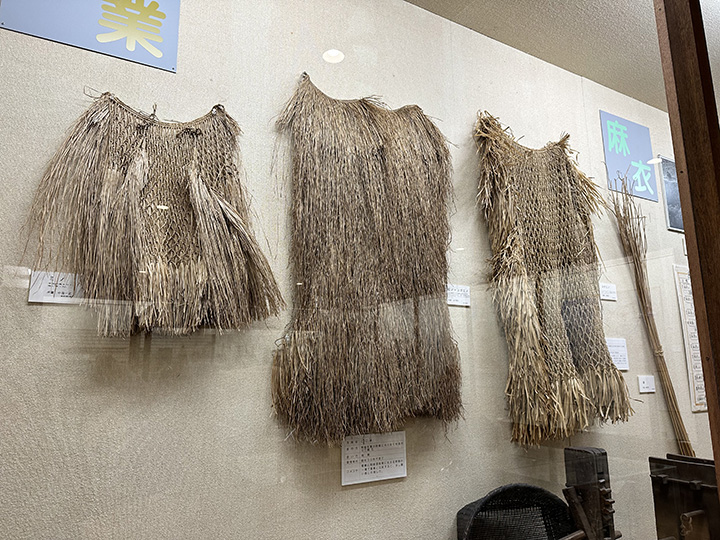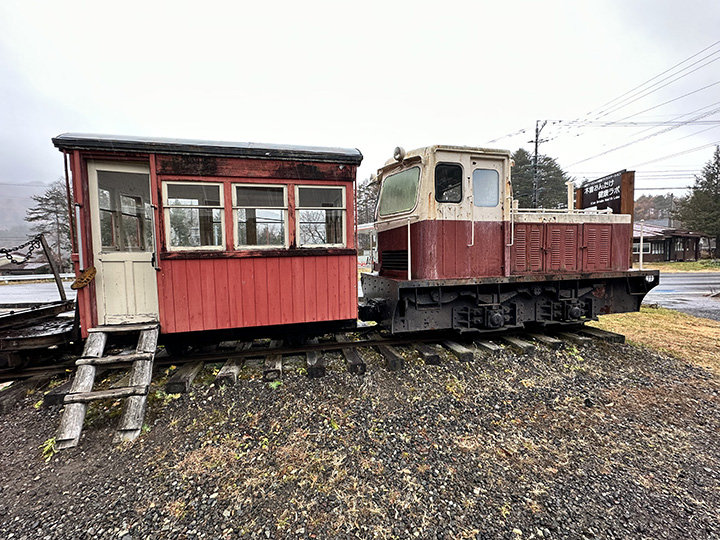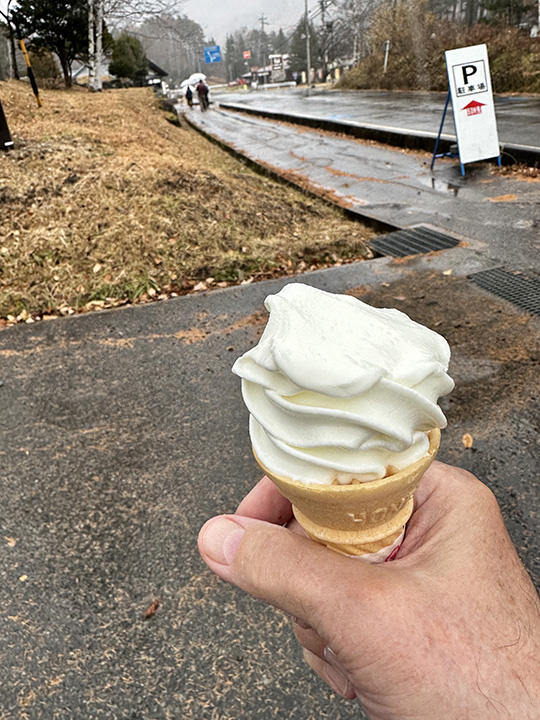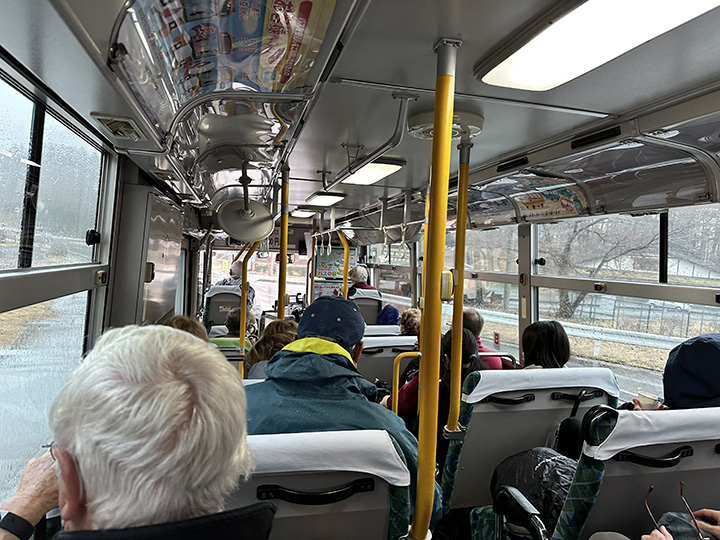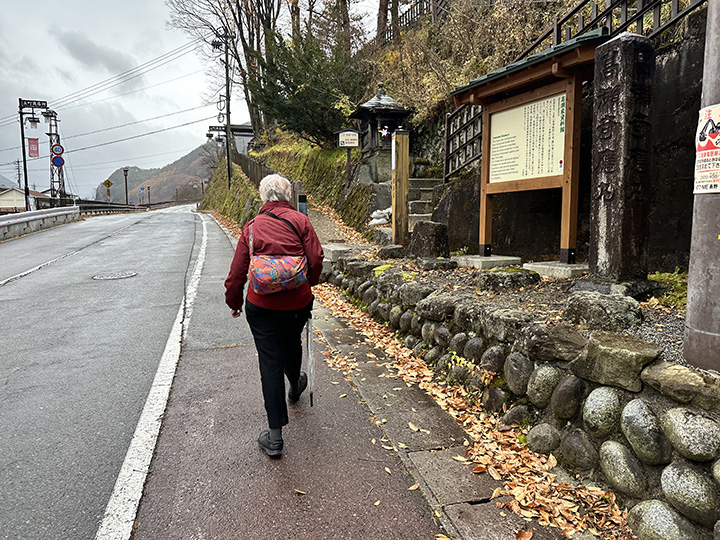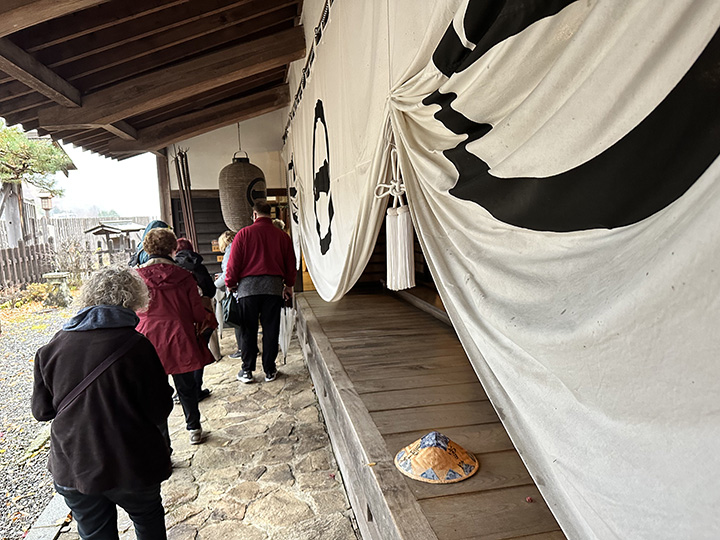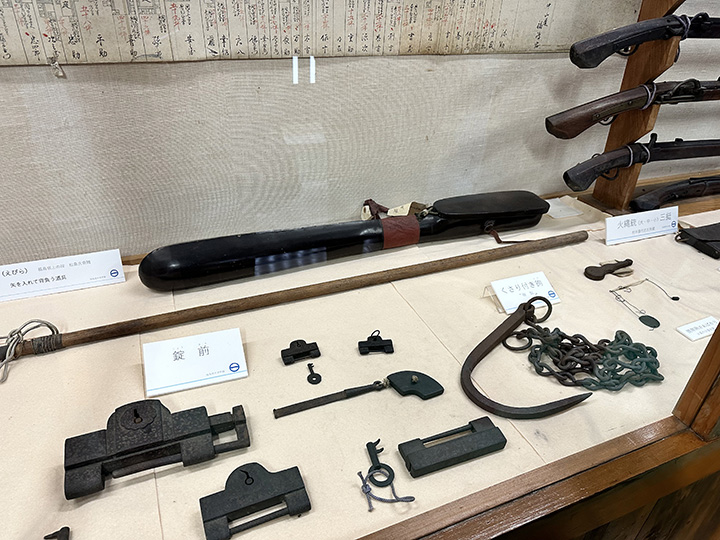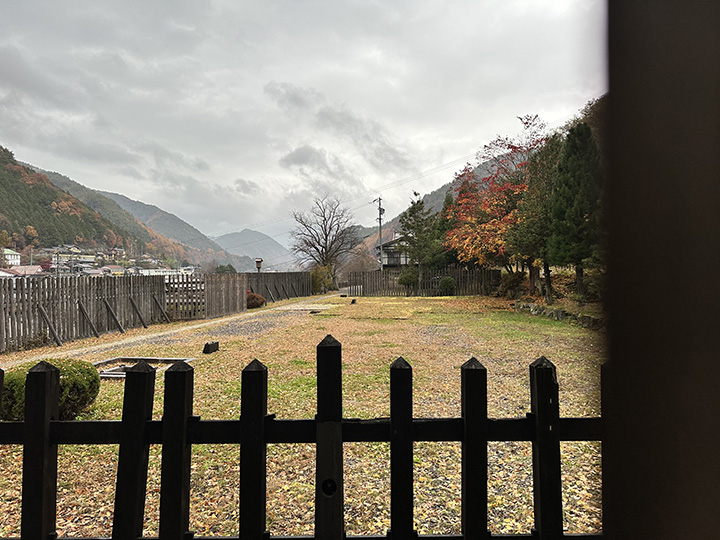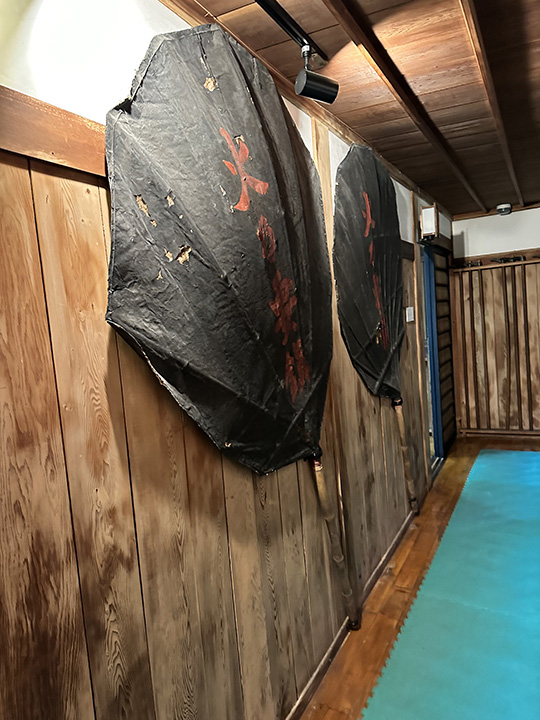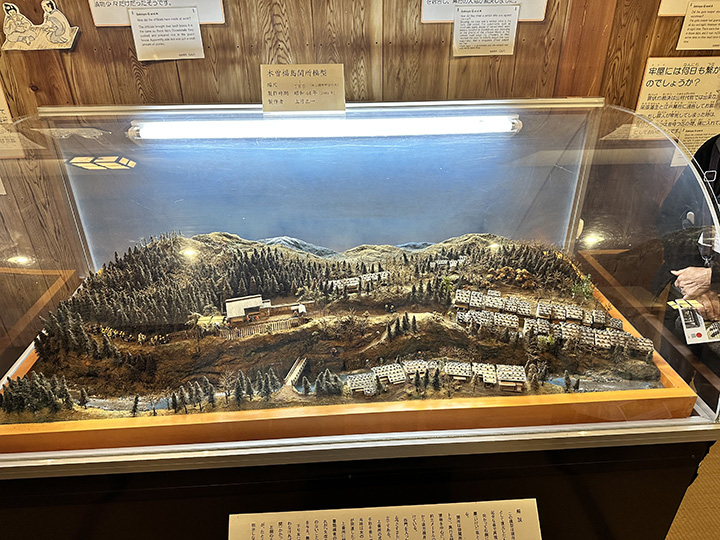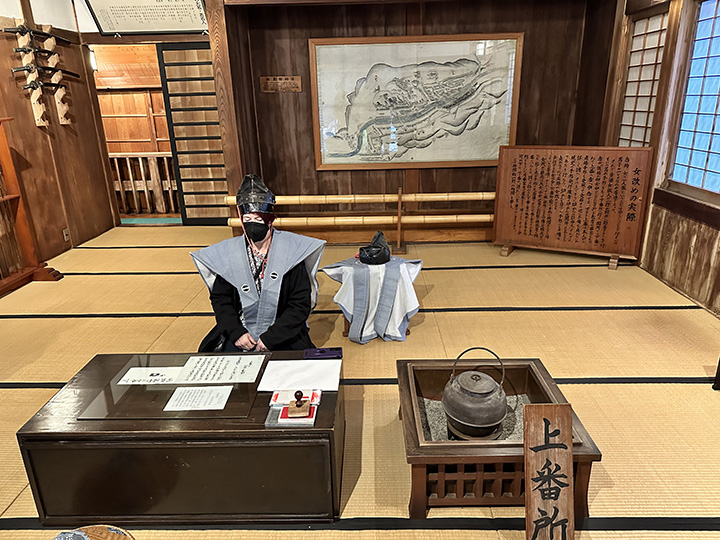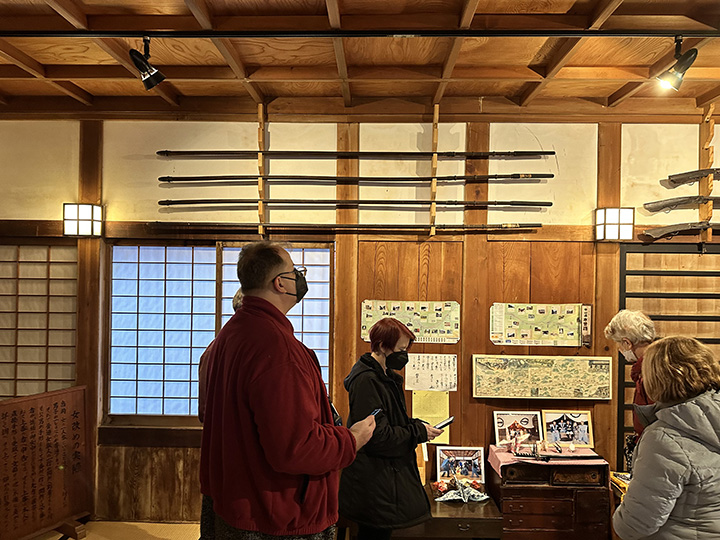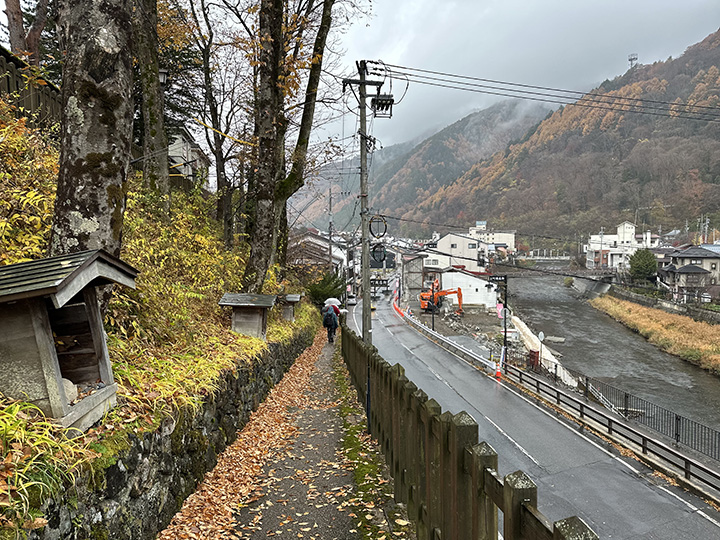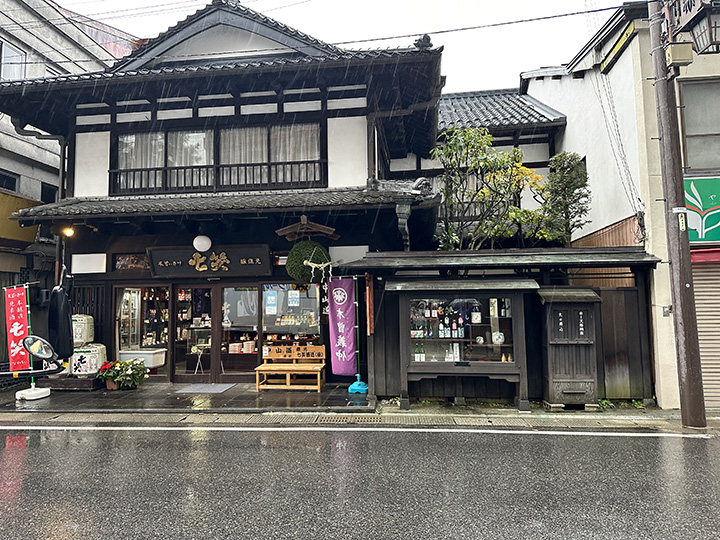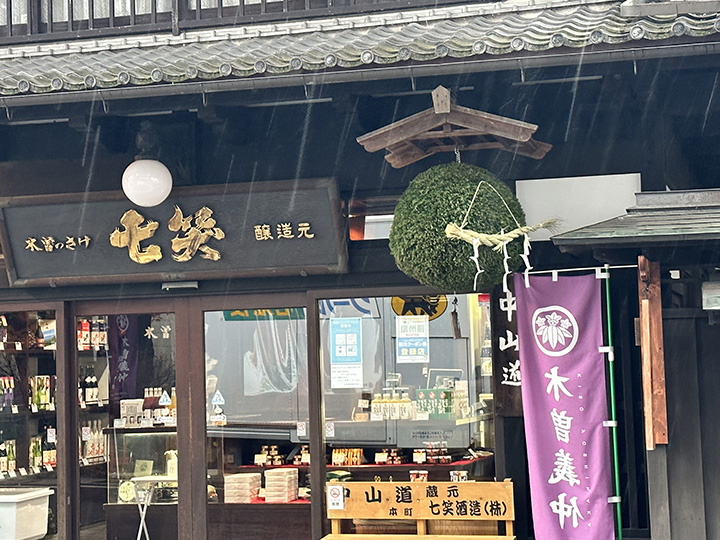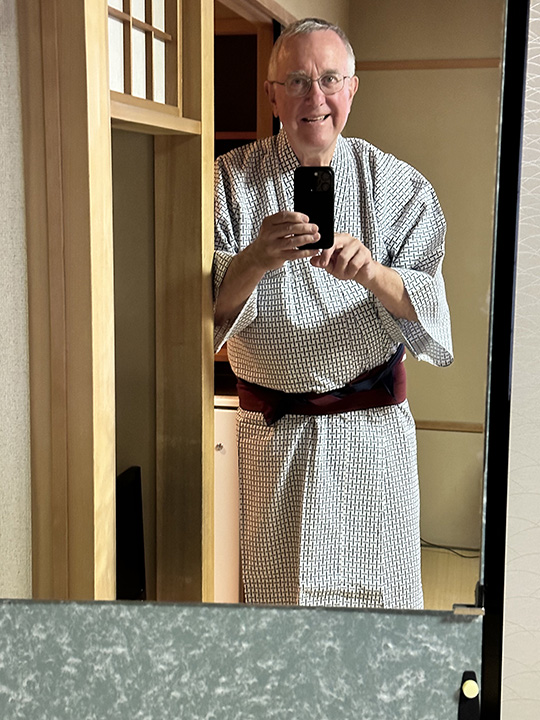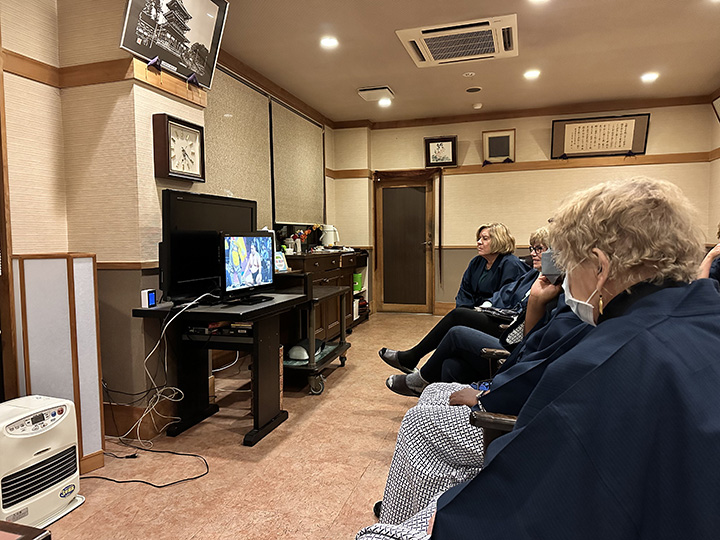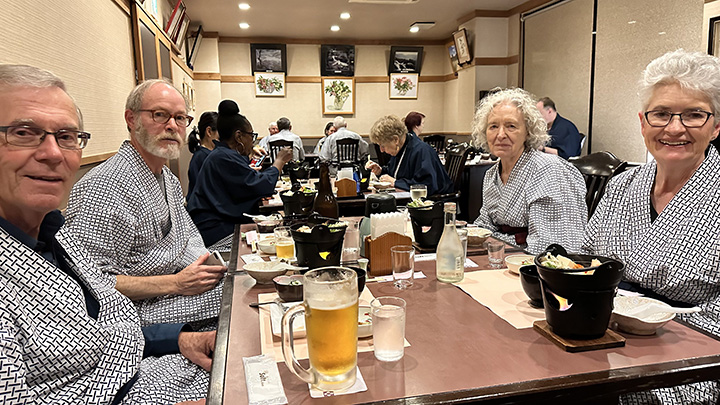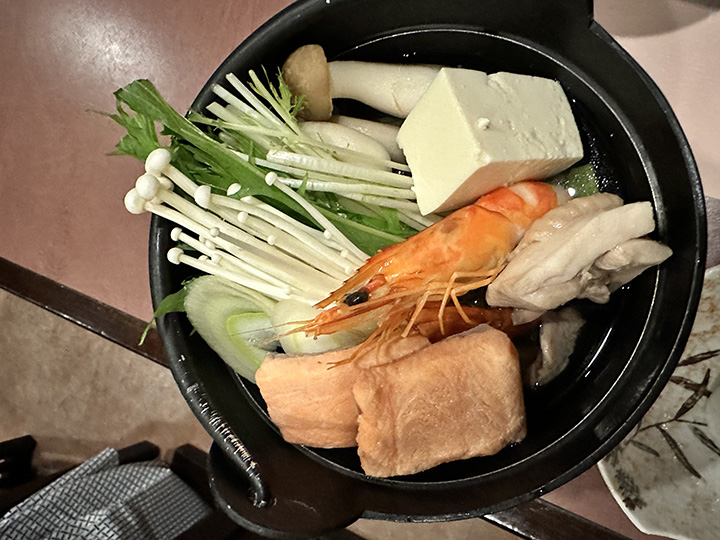|
Today was rainy and chilly but still it turned out to be a good day.
This is our ryokan. That's Japanese for hotel where you have to sleep on the floor.
The entrance.
The family of the proprietors has owned this inn for 14 generations. One of their ancestors was a samurai and this was his uniform. I tried every angle but never could get a shot without all that reflection.
Ryokans usually feature communal hot baths, and this one is no exception. I figured it would not be polite to take a camera into the bath while people were using it, so this morning I went up to the facility when it was empty and snapped a few pictures. Things aren’t like they were in the old days; the men and the women bathe separately now. Boys on the left, girls on the right.
This is the dressing room where this afternoon I took off my kimono and everything else I was wearing.
You just put your clothes in a basket.
You can even weigh yourself if you like. I didn't like.
And this is the place where I bathed myself sitting on a little stool dumping water over my head with those wooden buckets and scrubbing down all over because you’ve got to be clean before you get into the common bath.
And there is the common bath. The water is very warm, but not uncomfortably hot. A very hot tub.
There is also a hot tub outside. It was covered this morning but later in the afternoon I used it and enjoyed sitting on the far side where the cold raindrops splashed on my head while I luxuriated in the warm water.
Let's gather in the misty rain and wait for a bus.
Here we are boarding right-on-time local transportation to our first experience of the day.
The bus has dropped us off after about a one hour drive and now we are walking to the Uma horse farm that has a restaurant that has a culinary school where we will learn to make traditional Japanese buckwheat soba noodles.
I never did figure out the purpose of all those trees that obviously had been planted at the same time. Somebody said something about blueberries and I just gave up trying to figure it out.
I was ready to get to the noodle kitchen.
I told you it was a horse farm.
This is the kitchen where we learned all about making traditional Japanese noodles. Want to know more about Japanese noodles? Both udon and soba are typical Japanese noodles forming part of the Japanese diet and culture. Served hot or served cold, they are both delicious and are compatible with a variety of other added ingredients. They are cooked similarly- in a large container of boiling, salted water and done until just right in consistency. They differ in other ways. Udon noodles are made out of wheat flour; they are thick and white in color. Best as fresh, they are soft and chewy. Due to their neutral flavor, they are able to absorb strong-flavored ingredients and dishes. Dried udon is also good, however, the texture is more dense. On the other hand, soba noodles are made out of buckwheat, with a strong nutty flavor. Many though have wheat in them also, which means they are not gluten-free. Pure buckwheat soba is gluten-free and stronger in flavor. The noodles are thin and soft, a lot chewier and nuttier than udon. Dried soba resembles flat spaghetti and is usually light beige to dark brown-gray in color. The noodles differ in origins, too. Udon is credited to a Buddhist priest, who traveled to China in the 9th century and brought back udon noodles to his village in the Sanuki region. He was the one also who introduced udon soup. Soba origins are traced back to the Edo period, consumed by the Edo people, the present day Tokyoites. They were considered wealthier and are able to afford the otherwise expensive soba at the time. Thankfully, today, both noodles are popular, affordable, and are readily available. We made soba noodles.
There were a number of noodle-making stations so we had to split up into teams. I got lucky. Suzanne and Linda were great noodle-makers.
I started to get the hang of it.
And it was fun!
The professional noodle-maker helped a little.
But when it came to chopping noodles, I took the honors.
OK, noodle-lady had to finish up.
Here we are in action
And here are our noodles. Don't they look great?
We're about to sample the soba.
A bowl of team #3's very own noodles.
They were yummy.
The rain has picked up in intensity as we head back to the little town where the bus dropped us off.
We visited the Kaida Folk Museum where we learned about how the common folk lived in this area in the 19th century.
The horses ridden by the samurai were mostly sturdy Kisouma, native horses that resembled stocky ponies rather than modern-day thoroughbreds. They were stub faced, long haired, short legged, shaggy looking creatures.
There was a live one outside. I think the stuffed horse looked a bit less scruffy.
The saddle on the left is made of leather and would have been used by somebody important. The saddle on the right is made of wood and woven hemp, and it was the common person’s saddle.
When it was snowing or raining, this is what you wore.
They have ferocious b'ars in Japan.
The serow is a Japanese goat-antelope, an even-toed ungulate mammal. It is found in dense woodland in Japan, primarily in northern and central Honshu. The serow is seen as a national symbol of Japan, and is subject to protection in conservation areas. This one must have wandered outside his conservation area, because he is dead and stuffed.
There was a funny little train outside the museum. I'm not sure why.
A real ice cream cone! I hate to say it but it was better than ice cream cones back home. This one featured the unmistakable flavor of high butterfat cream. Yum!
Another bus ride, this time back to Kiso-Fukushima. Of all the Nakasendo routes connecting Edo (Tokyo) and Kyoto, the section through the steep Kiso Valley is called Kisoji. There are 11 post towns along this section, starting from the north: Nigigawa-juku, Narai-juku, Yabuhara-juku, Miyanokoshi-juku, Fukushima-juku, Uematsu-juku, Suhara-juku, Nojiri-juku, Mitsuruno-juku, Tsumago-juku, and Magome-juku. We are visiting Fukushima-juku, which is at the halfway point between Edo and Kyoto on the Kisoji.
Where we are going to visit Fukushima Sekisho Museum.
Kathleen leads the way.
Fukushima Sekisho was the main barrier for monitoring traffic on the Nakasendo Highway in the Edo Era. They strictly enforced the laws against bringing guns into Edo and capturing escaped hostages (the wives and daughters of feudal lords living in Edo). The barrier was set up to block a narrow area at the top of a cliff awaiting travelers.
Today, there is a museum that recreates the atmosphere of the barrier, displaying valuable materials such as wooden passes and weapons.
The Road Scholars are learning all about it.
Of course travelers on the Nakasendo Highway had to pay taxes at this station, and of course some tried to sneak around it. That wasn't a good idea, because guards were prepared to execute offenders. Here are some of their tools of the trade. That cylindrical thing is a quiver for arrows. And those are bows for arrows.
Best not to get caught trying to sneak by.
This is where the Nakasendo came into town.
During emergencies, these fans were used to direct flames away from the buildings.
The diorama shows the layout of this place. See the travelers arriving over there on the left?
Lynn pretended to be the tax collector.
More pole arms are up there on the wall.
The view was nice from up here.
But it's time to go back into town.
That's a sake brewery.
You can tell by the green ball. Remember how they hang a ball made of cedar boughs and when they turn brown the sake is ready?
The sake isn't ready yet.
Bill admires his kimono. He's actually headed to the hot bath described earlier. When he is done, he'll go downstairs to tag up with the others.
He discovered several of the Road Scholars were gathering for a special treat. They were watching a sumo wrestling tournament.
It turned out Kathleen is a big sumo wrestling fan and knows all the players. She gave us a fascinating crash course in the sport.
I learned that even though sumo wrestlers may sport nicknames like “whale blubber” they actually have much more muscle mass than fatty tissue. They are more healthy than a morbidly obese athlete. I learned that on the Internet so it must be true. The guy on the right is the wrestler she got a picture with.
How do I look in my formal kimono?
OK, Dennis, David, Molly and Vicki look a lot better. It's true.
For dinner we had another sterno pot with different ingredients. I’m afraid I’ll let Mr. Shrimp cook a little too long and he was rubbery. But the rest of it was quite tasty.
|

